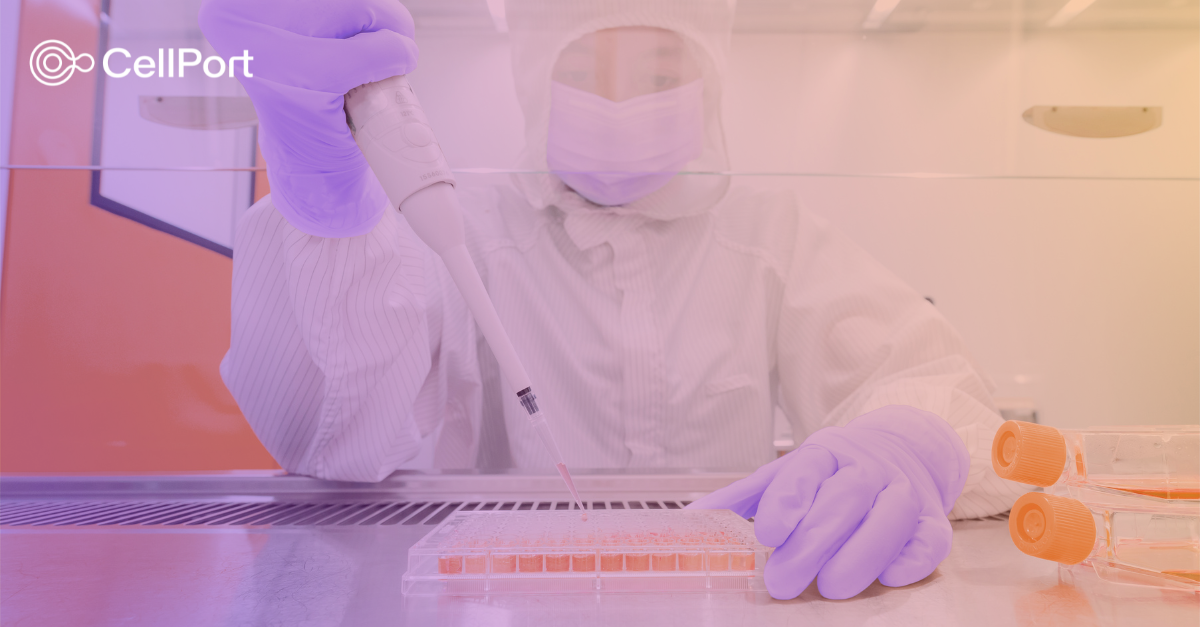

Cell Culture: A Technician’s Perspective
Cell culture work is time consuming and stressful. It is so easy to add the wrong media, use the wrong flasks, the wrong volumes. You have to do all of the counts, then the calculations, and then the actual passaging work. On top of that, there is constant labeling and relabeling, and relabeling. Did I mention relabeling? Keeping track of everything is exhausting, but absolutely critical.
My first experience using barcoded flask labels and cell culture software was an existential relief. It was as if I took off a 50-poundweight vest that I had been wearing in the cell culture room over the past few years.
Is this the right flask? I can scan and check. Which media am I supposed to use for this flask today? I can scan and check. What was the count on this flask last time? Scan and check.
The Importance of Digitalizing Research and Preparing for Future Success
In biopharma research, precision, efficiency, and traceability are not optional—they are mission-critical. As the complexity of cell-based research continues to grow, so too does the need for robust, centralized systems that streamline workflows, reduce errors, and enable real-time decision-making. Digitalizing cell culture and related research activities is no longer a “future goal”—it’s an operational necessity for ensuring competitiveness, compliance, and scientific integrity.
Driving Efficiency and Reducing Errors in Cell Culture
Digital platforms transform cell culture operations from manual, paper-based processes into streamlined, automated workflows.
- Improved efficiency: Automated tracking of thaws, passages, freezes, media changes, and cell counts eliminates redundant recordkeeping and speeds up data entry.
- Error reduction: Barcode scanning of cells, media, and reagents ensures that every culture, plate, or reagent is correctly identified, linked, and tracked, minimizing costly mix-ups.
- Optimized scheduling: Built-in scheduling tools help plan and coordinate weekly culture work, allowing teams to see upcoming tasks and monitor completions in real time.
Complete Visibility Into Cell Line Histories
One of the most significant advantages of digitalization is the ability to instantly access comprehensive histories for every cell line:
- Review all past activities—media changes, passage numbers, and cell counts—without sorting through binders or spreadsheets.
- Link images, test results, and assay data directly to individual flasks or plates, creating a complete record for scientific review or regulatory audit.
- Automatically track parent-child relationships and lineage, ensuring clarity for long-term projects or technology transfer.
Centralized Cell Bank and Equipment Management
Digital platforms enable real-time Cryotank inventory tracking so that researchers know exactly what is stored, where, and in what condition:
- Scan cells in and out of cryotanks for instant updates.
- Organize cell banks for quick retrieval, avoiding duplicate storage or unnecessary thawing.
- Maintain full traceability for compliance and reproducibility.
Real-Time Monitoring and Collaboration
With digital incubators and integrated dashboards, teams can view and manage active cell cultures in real time:
- Click on a culture to view its full history and related data.
- Receive instant notifications for deviations, new projects, or urgent actions.
- Collaborate seamlessly through in-app messaging, ensuring all team members remain informed without the delays of email or verbal updates.
Inventory Tracking in Digital Fridges and Freezers
Keeping research moving requires accurate resource management:
- Monitor media inventory in real time to prevent shortages.
- Automatically calculate required volumes for media prep, exchanges, and passaging based on your current cultures.
- Track lot numbers and expiration dates to maintain quality and compliance.
Custom Data Reporting for Strategic Insights
Digitalizing research not only captures operational data—it transforms it into actionable insights:
- Generate custom cell performance reports to evaluate productivity, viability, and trends over time.
- Export tailored reports for internal reviews, regulatory submissions, or grant applications.
- Identify bottlenecks, variability, or performance differences across cell lines to inform R&D decisions.
Preparing for the Future
The biopharma industry is moving toward increasingly complex, high-throughput, and collaborative research models. Organizations that adopt digital solutions today will be better positioned to:
- Scale operations without sacrificing quality.
- Meet stringent regulatory documentation requirements.
- Leverage historical data for AI-driven insights and predictive modeling.
Conclusion:
Digitalizing research in the biopharma space is not merely about convenience—itis about building an infrastructure for accuracy, scalability, and innovation. By integrating real-time tracking, centralized data management, and automated workflows, researchers can maximize cell culture efficiency, minimize errors, and prepare for the demands of tomorrow’s science.


.png)
.png)



